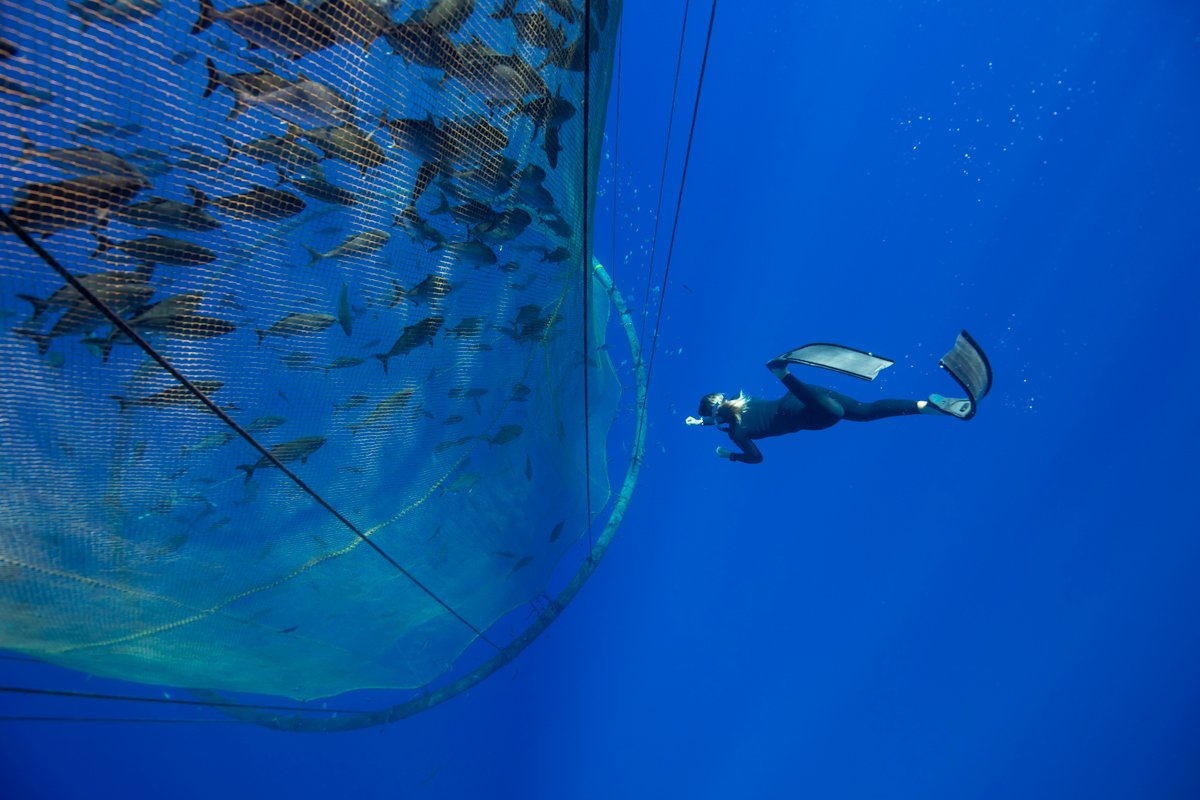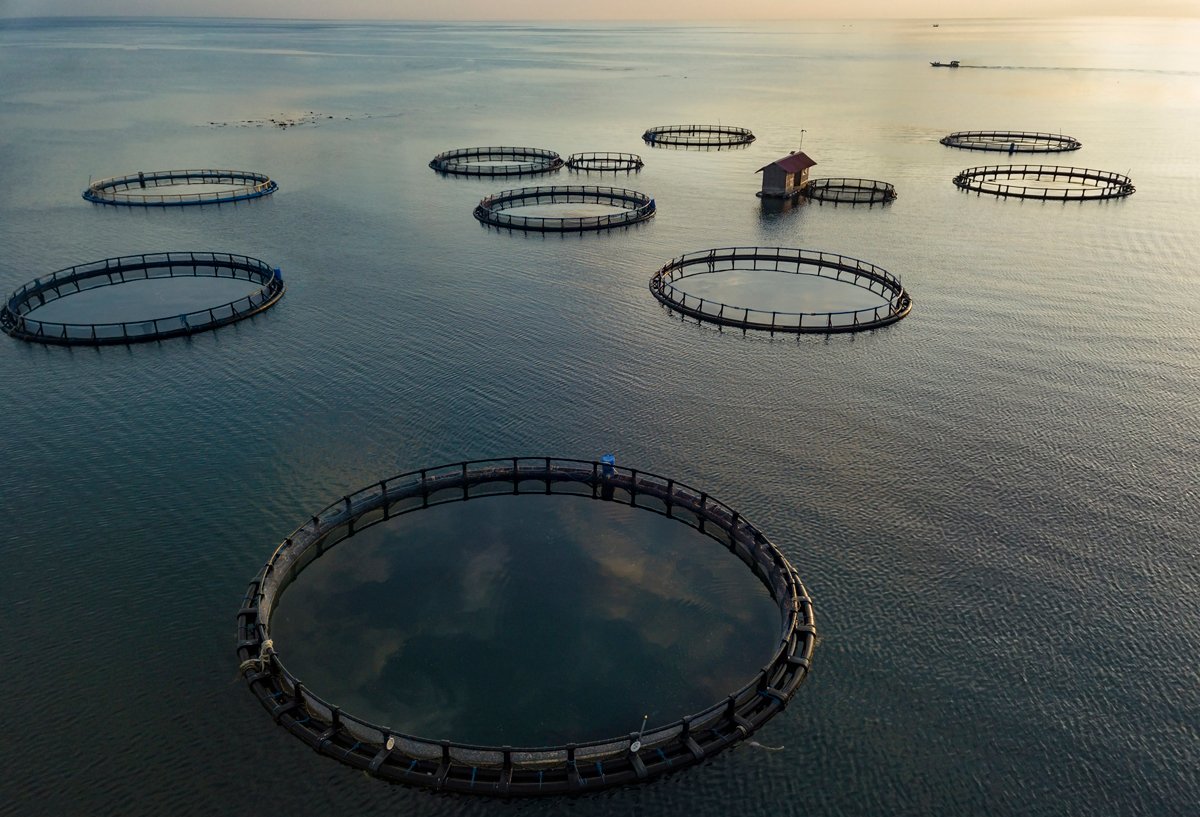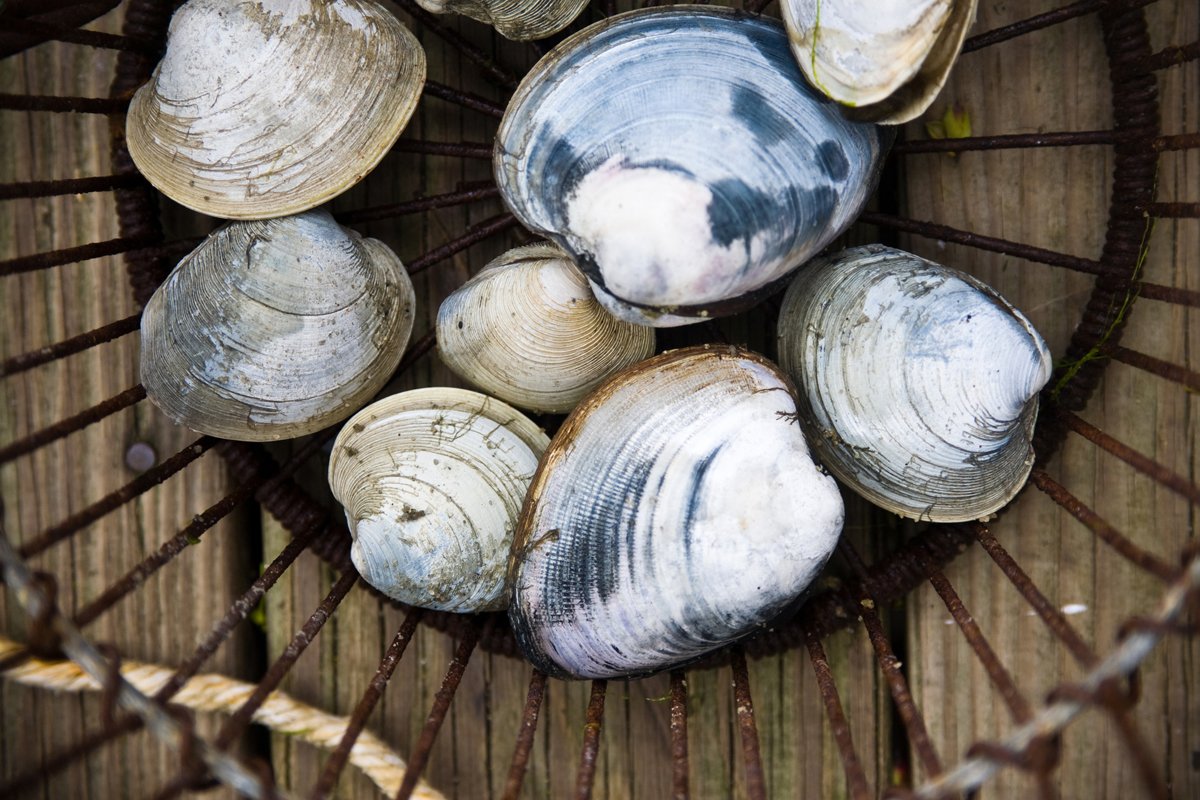The cardboard gravestones read “RIP Local fisherman,” “RIP Wild Fish,” and “RIP Humpback Whales.” Assembled in response to new aquaculture sites planned off the coast of California, the gravestones were brought to the offices of the National Oceanic and Atmospheric Administration (NOAA) in Long Beach, California, in April by activists keen to register their discontent.
The sites pave the way for possibly dozens of new open-pen fish farms as far as three miles offshore, the future home of species that range from carp to salmon. Chief among the protesters’ concerns were entanglement of marine mammals, the expansion of dead zones caused by fish excrement, and infringement on wild fishing grounds.
Such has been the pushback to the announcement of the site plan following NOAA’s first-ever five-year strategic plan for aquaculture. The plan, released last October, outlines national goals for a thriving and sustainable domestic farmed seafood sector. Central to its aim is using science and best-practice approaches to identify areas in the U.S. suitable for development. Pro-aquaculture proponents have touted its potential to reverse a growing seafood trade deficit and provide Americans with seafood for years to come. However, not everyone sees it this way.
Opponents to the plan point to known risks, including ecological disasters like the infamous 2017 salmon spill that took place in Washington State waters when a salmon net pen collapsed, releasing roughly 300,000 Atlantic salmon in Puget Sound. The spill wreaked havoc, and scientists, environmentalists, and policymakers worried escaped salmon could spread disease or parasites to native Pacific varieties.
Accidents like these are why some governments are moving away from the practice, opponents say. Argentina, Washington State, and British Columbia recently banned net-pen salmon aquaculture. So why, then, is the U.S. moving ahead?
The goal to increase farmed seafood production in America dates back to the National Aquaculture Act of 1980 when the U.S. established aquaculture as a national policy priority. Thanks to an acceleration of scientific improvements in the field, the effort has gained momentum over the past decade.
In May 2020, former President Donald Trump released an executive order to ramp up aquaculture development and identify future “aquaculture opportunity areas” or AOAs suitable for commercial fish farming, an initiative meant to boost the competitiveness of the American seafood industry. Since then, nine areas in the Gulf of Mexico and 10 areas in Southern California have been selected.
“The United States has vast amounts of water and places where aquaculture can be done,” says Drue Banta Winters, campaign manager of industry coalition Stronger America Through Seafood (SATS). Her organization is pushing Congress to pass the AQUAA Act to establish national standards for aquaculture.
By developing more domestic sources of seafood, NOAA aims to reduce U.S. reliance on imports. It states that, “the United States imports at least 70 percent of its seafood. While we continue to sustainably manage our wild harvest fisheries, we cannot meet the increasing domestic demand for seafood through those fisheries alone.”
“The goal is to achieve the vision of a thriving, resilient, and inclusive aquaculture sector that can complement wild fisheries, create jobs, economic opportunities, and contribute to national security.”
Aquaculture’s proponents point to more than 6 billion pounds of seafood imported into the U.S. in 2020 as proof enough of the need for development. Seafood imports resulted in a trade deficit of $17 billion, according to NOAA. According to some politicians, scientists, and industry groups, the imbalance directly results from the U.S. falling behind in fish production, ranking a mere 17th for aquaculture worldwide. The lack of investment in fish farming, they say, weakens the U.S. trade position.
Economics is a key objective. “The goal is to achieve the vision of a thriving, resilient, and inclusive aquaculture sector that can complement wild fisheries, create jobs, economic opportunities, and contribute to national security,” says Danielle Blacklock, director of the Office of Aquaculture at NOAA.
But, again, not everyone sees it this way. Many critics reject the idea that the trade deficit results from a lack of fish. According to Andrianna Natsoulas, campaign director at Don’t Cage Our Oceans, a more likely explanation is that the U.S. sends too much domestically caught seafood out of the country for cheap processing and then re-imports it for consumption.
The organization, an environmental nonprofit focused on the harms of offshore finfish farming, recently took a closer look at the NOAA data. They found that the U.S. can easily feed itself with wild caught domestic seafood.
The deficit figures, they say, fail to account for re-imported seafood. This process, also known as re-shipment, has been called “the great American fish swap” because it creates a confusing web of exports and imports that do nothing to improve food security.
“If we kept the seafood landed in the U.S., we would not have to import so much or develop aquaculture,” says Natsoulas. “Aquaculture is just contributing to the commodification of food.”
Natsoulas says that the U.S. should instead dedicate its resources to developing a more robust seafood processing capacity to balance the trade deficit. Don’t Cage Our Oceans is working towards that goal.
In addition to trade issues, there may be other problems related to global economics. Dane Klinger, director of aquaculture at Conservation International, says that seafood traded internationally is subject to economies of scale and differential labor costs. “As the sector grows, it would need to compete with potentially lower cost imports from countries in Asia, which have lower labor costs than the U.S., and Norway, which achieve economies of scale,” he says.
Countries like Norway and China are also way ahead of the U.S. in developing aquaculture at a larger scale. Klinger says that while the U.S. has the opportunity to be a leader in the sector, due in part to its stringent regulations and sustainability standards, it will face steep competition from more established players.
There are more opinions about aquaculture than there are fish in the sea. For many opponents, environmental concerns are top of mind. Whether it is concerns over fish effluent and its contribution to harmful algal blooms; the spread of invasive species; or the spread of disease from crowded farmed fish to wild ones, including a range of infectious agents and parasites, such as sea lice; critics have much to worry about.
For farms that will be built at least three miles from shore, some of those problems may be minimized. The main difference is that deeper waters and stronger currents dilute pollutants and ensure that they dissipate faster.
Halley Froelich, a marine biologist at the University of California, Santa Barbara, has conducted independent research looking into the ecological effects of offshore systems. In 2017, she published a review of the available literature and found that there is no consensus on the baseline definition of “offshore.” Studies have instead examined farms at a variety of distances from shore, water depths, and current speeds. This inconsistency makes it challenging to home in on best practices in the field.
















Like the story?
Join the conversation.